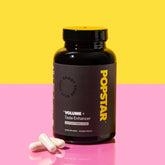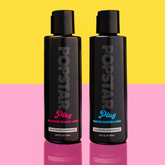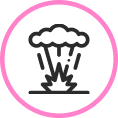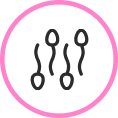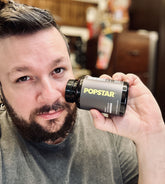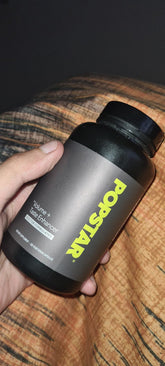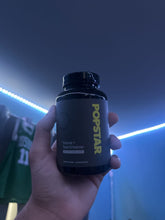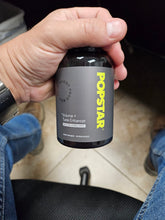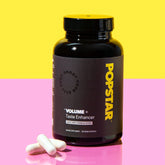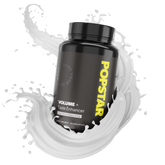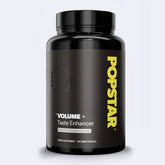The term “Gooch” is a colloquial name often used to describe the stretch of skin and underlying connective tissue between the anus and the scrotum in men. In more formal medical terminology, this region is generally referred to as the “perineum.” While it may not receive as much attention as other parts of the male anatomy, the gooch plays a crucial role in overall male health. This sensitive area supports core bodily functions—ranging from sexual activity and reproductive processes to urinary and bowel movements. Understanding the gooch is essential not only for proper hygiene and comfort, but also for recognizing potential concerns that may need medical attention.
Table of Contents
- What Is the Gooch?
- Anatomy of the Gooch
- Functions and Importance
- Common Concerns and Conditions
- FAQs About the Gooch
- Maintenance and Care
- Conclusion
What Is the Gooch?
The term “gooch” is widely used in casual contexts to describe the area also known as the perineum. In men, the perineum runs between the scrotum—containing the testes—and the anus. Sometimes referred to as the “taint” in slang, the gooch is a soft but highly sensitive region due to its rich network of nerves and blood vessels. Medically speaking, this zone provides support to several aspects of male health, including the pelvic floor muscles that assist with urination, ejaculation, and even core stabilization.
The word “gooch” itself is informal and does not appear in strict medical literature, but it has gained popularity over time, especially in discussions related to men’s health, sexual wellness, grooming, and hygiene. Whether one calls it the gooch, the perineum, or the taint, understanding what it is and how it connects to the rest of the male reproductive system can deepen one’s awareness of personal well-being.
Many men may overlook this region until they experience discomfort, pain, inflammation, or other symptoms. Because of its proximity to the genitals, anal area, and several vital nerve pathways, the condition of the gooch can significantly impact daily comfort, sexual function, and even mental health. Moreover, it plays a supporting role in various bodily processes, ranging from excretion to fertility.
Anatomy of the Gooch
To fully appreciate the significance of the gooch, it helps to understand its anatomical structure. The perineal region is composed of several layers of muscle, fascia, and skin. Key components include:
- Perineal Raphe: A slight seam-like line that can extend from the anus through the midline of the scrotum to the penis. This line is formed during fetal development.
- Pelvic Floor Muscles: A group of muscles that close off the pelvic cavity and support the organs. These muscles are crucial for bladder control, bowel movements, and sexual function.
- Nerves: The pudendal nerve is the primary nerve supplying sensation to this area. A dense network of nerve fibers makes the gooch especially responsive, thus capable of transmitting signals involved in both pleasure and pain.
- Blood Vessels: The perineum contains important blood vessels that supply nutrients and oxygen to maintain healthy tissues in and around the groin, testicular region, scrotum, and penis.
- Soft Tissues: Connective tissue, fat, and layers of skin all work together to provide a protective cushion and mobility between the anus and the scrotum.
When discussing the gooch, it is beneficial to know that it is not just a random strip of skin. Rather, it is a point of convergence for vital structures that influence major bodily functions. Because of the area’s delicate nature, even minor irritations can lead to discomfort, itching, or potential infections if not properly cared for.
Relation to Surrounding Structures
The gooch lies at the crossroads of the male reproductive and excretory systems. For instance, the urethra—which carries urine and semen—runs through the penis and is supported by the pelvic floor muscles. The scrotum, housing the testes, is directly in front of the perineum. The testes themselves produce testosterone, a crucial hormone for male sexual characteristics, muscle mass, and fertility. Behind the gooch is the anal area, which is responsible for excretory functions. All these neighboring structures rely on a stable, healthy perineum for proper positioning, blood flow, and nerve conductivity.
Additionally, the proximity of the gooch to the prostate (located just above the pelvic floor, inside the body near the bladder) means that certain areas of the perineum may offer direct or indirect stimulation to the prostate. This complex relationship among nerves, muscles, and blood supply underlines just how sensitive and important the gooch can be for men’s sexual function and general wellness.
Functions and Importance
The gooch has myriad functions that advance men’s overall health and daily comfort. Apart from being a structural “bridge” between the anus and the scrotum, it plays central roles in:
- Support for Pelvic Organs: The pelvic floor muscles originating in—and around—the perineal region help hold up the bladder, intestines, and reproductive organs.
- Urinary and Bowel Control: Proper muscle tone in the gooch reduces the risk of incontinence and assists with efficient bowel movements.
- Sexual Function: Sensitive nerve endings in the perineum contribute to arousal, orgasm, and ejaculation. Good blood flow in the region supports erectile function.
- Core Stability: A healthy set of pelvic floor muscles, anchored at the gooch, can lessen lower back pain and enhance overall core strength—beneficial for posture and athletic performance.
Misalignment, weakness, or damage to these structures can lead to sexual dysfunction, chronic pain, or a compromised quality of life. Thus, maintaining this area in good health, whether via exercise, hygiene, or regular medical checkups, goes well beyond cosmetic or superficial concerns.
Role in Reproductive Health
Men’s fertility and reproductive health can be influenced by the condition of the gooch. Acute or chronic pain in the perineum might inhibit normal sexual activity, potentially affecting ejaculation or intercourse. Furthermore, some studies suggest a strong link between pelvic floor muscle tone and erectile strength, hinting that an integrated understanding of the perineum can help men address certain complications with erections or orgasm. The gooch’s well-being can thus be important for hormone function and the overall interplay of male sexual and reproductive systems.
Because the testes need proper circulation and temperature regulation for spermatogenesis (the creation of sperm), an inflamed or stressed perineal region may influence scrotal stability. While typically overshadowed by other male reproductive organs, the gooch’s structural support should not be underestimated.
Common Concerns and Conditions
The gooch, much like other parts of the body, can be susceptible to various health issues. Here are some of the most frequently encountered conditions:
- Skin Irritation: Excess sweat and friction from clothing can generate rashes, chafing, or even fungal infections in this skin fold region. Blisters, redness, or persistent itchiness often signify the need for improved hygiene or medical treatment.
- Folliculitis: Hair follicles in this area—especially if shaved or otherwise removed—can become inflamed. This may lead to red, painful bumps or pimples around hair follicles.
- Abscesses and Cysts: Clogged pores, sweat glands, or minor skin trauma can cause localized infections like boils or cysts. These can be painful and may require medical drainage if they do not resolve on their own.
- Perineal Pain Syndrome: Also known as chronic pelvic pain syndrome, persistent discomfort in the gooch area can have multiple causes, from muscular issues to nerve entrapment.
- Fistulas and Fissures: Inflammation of the anal area can sometimes extend to the perineum, causing pain and possible discharge if an abnormal passage forms.
Addressing these conditions at earlier stages is vital. While some issues can be managed with topical creams or improved grooming procedures, others may require professional medical interventions. Consistent, mindful care of the gooch helps ensure that potential problems do not escalate to more serious complications.
When to Seek Medical Help
It is important to consult with a healthcare provider if any of the following symptoms appear:
- Persistent pus, bleeding, or discharge from a lesion in the gooch area
- Severe pain, numbness, or sensations of burning that do not subside
- Fever or chills accompanying noticeable perineal swelling
- Inability to sit or stand comfortably over a prolonged period
- Any noticeable lumps, unusual hardness, or persistent cysts
An accurate diagnosis can either confirm minor irritation or point to more complex issues such as infections, dermatological conditions, or even systemic health concerns. A timely medical checkup is the best route to preventing complications and ensuring the well-being of your most sensitive areas.
FAQs About the Gooch
What is the difference between the gooch and the perineum?
The gooch and perineum refer to the same anatomical region in men—that stretch of skin and underlying tissue between the anus and the scrotum. The term “gooch” is a more informal, slang expression, while “perineum” is recognized in medical literature. Both terms describe a sensitive and integral zone that encompasses vital nerves, muscles, and blood vessels.
Why is the gooch so sensitive?
This area is loaded with nerve endings, most notably from the pudendal nerve. These nerves are essential for sexual function, sensation, and pain transmission. The presence of numerous blood vessels and muscles supporting urinary, bowel, and reproductive functions also explains its heightened sensitivity.
How can I keep my gooch clean?
To maintain good hygiene:
- Wash with warm water and an appropriate, mild cleanser to remove sweat and bacteria.
- Thoroughly dry the region to prevent fungal or bacterial growth in moist environments.
- Wear breathable, well-fitted underwear to minimize chafing and moisture buildup.
- Avoid harsh products or excessively scented soaps that can irritate delicate skin.
Regular cleaning, along with healthy grooming practices, is crucial to preventing infections or unwanted odors.
Is hair removal safe in the gooch area?
Hair removal in the perineum, whether by shaving, waxing, or other methods, can be safe when performed correctly. However, the region is prone to irritation, ingrown hairs, or folliculitis if proper precautions are not taken. For instance, always use clean and disinfected tools, shave with the grain of the hair to reduce irritation, and consider using soothing creams post-shave. When in doubt, consult a professional groomer or dermatologist.
Can the gooch affect sexual performance?
Yes. Due to the gooch’s high nerve density and close proximity to the prostate and pelvic floor muscles, any significant discomfort, inflammation, or weakness in this region can disrupt sexual performance. Proper pelvic floor exercises can enhance erection quality and orgasm intensity. Conversely, chronic pain or infections can hamper sexual desire and performance if not addressed.
Does gooch pain indicate a serious health issue?
Gooch pain (or perineal pain) could be triggered by a range of factors, from a minor skin irritation to more significant conditions like prostatitis or chronic pelvic pain syndrome. While occasional discomfort might not be alarming, continuous or stabbing pain, lumps, swelling, or discharges should prompt a visit to your healthcare provider. Early intervention can prevent complications.
Can gooch odor be prevented?
Personal hygiene and openness to adjusting routines are vital. Sweat, bacteria, and skin folds can create an environment prone to unpleasant odors. Regular washing with mild soap, ensuring dryness, wearing breathable clothing, and using powders or moisture-wicking products can help. If a persistent or unusual odor is present, seek medical evaluation to rule out infections or underlying disorders.
How can I relieve itching or discomfort in this region?
If the gooch is itchy or irritated:
- Rinse gently with warm water and pat the area dry. Avoid aggressive scrubbing.
- Apply over-the-counter antifungal or anti-itch creams as necessary, but follow product instructions.
- Try wearing looser, more breathable clothing until symptoms lessen.
- Seek medical advice if the problem persists.
Are there exercises specifically for the gooch?
While there is no single exercise labeled “gooch exercise,” pelvic floor exercises (often called Kegel exercises) can help strengthen the muscles in this area. By repeatedly contracting and relaxing the pelvic floor muscles, men can support bladder control, enhance sexual performance, and even reduce mild pelvic pain. Focus on gently squeezing the muscles used to stop urine flow, holding for several seconds, and then releasing.
Are lumps in the gooch area normal?
Not typically. Small lumps or cysts can form from clogged glands or ingrown hairs, but any persistent lump or swelling should be examined by a healthcare provider. While most lumps are benign, it is wise to rule out other issues such as abscesses, infections, or more severe conditions that might require special treatment.
Does the gooch play a role in fertility?
Indirectly, yes. The general condition of the pelvic floor and surrounding areas—including the gooch—can affect factors like blood flow and comfort during sexual activity. Chronic pain or inflammation near the scrotum could interfere with normal reproductive functions or reduce the frequency of intercourse. Ensuring a healthy perineum can thus support a conducive environment for fertility.
Maintenance and Care
Proactive care for the gooch can provide a remarkable boost to comfort, intimate confidence, and overall well-being. Here are some guidelines:
1. Hygiene Routine
Incorporate a daily cleansing routine using warm water and mild soap. Scrub gently to avoid microtears on sensitive skin. Pay close attention to rinsing and drying, since stagnant water can create an environment for bacterial or fungal infections. If you sweat excessively, consider refreshing the gooch after workouts or on hot days. Avoid harsh chemicals or overly fragrant products, as they may trigger allergic reactions or additional irritation.
2. Clothing Choices
Clothing and fabric matter. Breathable, moisture-wicking underwear—often made of cotton or specialized synthetic blends—helps control humidity. Tight or rough-textured fabrics can cause chafing, disrupt air circulation, and lead to skin folds retaining moisture and odor. Aim for well-fitting but not overly restrictive undergarments. Changing out of sweaty clothes promptly after exercise is another effective way to keep this region clean and dry.
3. Grooming Techniques
Grooming the perineum hair is a personal choice, but always take caution. If trimming or shaving, invest in proper tools (clean razor or clippers) and use lubricating gels or creams that help avoid razor burn. Remove hair slowly and carefully to sidestep cuts. Post-grooming, apply a fragrance-free moisturizer or a product formulated to reduce irritation. If waxing or employing other hair removal methods, be gentle or consult a professional, as the skin here can be quite delicate.
4. Pelvic Floor Exercises
Kegel exercises can improve muscle tone in this zone by systematically contracting and relaxing the muscles used to control urination. Consistent practice may bolster sexual performance, mitigate urinary incontinence, and even reduce pelvic pain over time. Start by tightening the muscles for about five seconds, then release, and repeat in sets. Progressively incorporate these exercises into daily routines—such as during commutes or while sitting at a desk.
5. Balanced Diet and Hydration
A healthy diet consisting of nutrient-rich foods can maintain skin integrity and reduce inflammation in the body. Adequate hydration helps flush out toxins and regulate body temperature, reducing excessive sweating in the gooch. Integrating foods with vitamins A, C, and E supports collagen formation and skin repair, while adequate protein intake helps muscles—including the pelvic floor—stay strong.
6. Monitor for Irregularities
Regular self-examinations enable you to detect early changes—such as lumps, discoloration, or unusual pain. Catching potential concerns in the early stages makes treatment more straightforward. If you notice persistent rashes, dull throbbing, or unusual odors, do not ignore them. Timely medical consultations can confirm whether the issue is simple irritation or something needing further intervention. Maintaining open communication with healthcare professionals fosters proactive strategies to preserve gooch health.
7. Avoid Overexertion
Straining or overexerting the pelvic region—especially while lifting heavy objects or engaging in high-impact sports—can put undue stress on the perineum. Proper technique and adequate muscle strength are vital to avoid injuries. Listening to your body, pausing to rest if something feels uncomfortable, and practicing good form during exercise are fundamental preventative measures. Pelvic floor discomfort that persists after strenuous activities could be a sign to scale back or seek medical advice.
Conclusion
The gooch may be an informal term, but it holds formal significance to men’s overall well-being. Far from being a trivial patch of skin, this intimate area—the perineum—supports urinary and bowel control, sexual functioning, and core stability. Because of its sensitivity and proximity to vital systems, hindrances like inflammation, infections, or chronic discomfort can drastically reduce quality of life. Nurturing this region with attentive hygiene, mindful grooming, and a balanced lifestyle paves the way for long-term comfort and confidence.
Regularly check in with your healthcare provider if you experience lingering discomfort, lumps, or other abnormalities, as early detection and treatment can alleviate or prevent complicated issues down the road. Incorporating perineal care into your routine—like effectively cleaning, maintaining dryness, and performing simple pelvic floor exercises—empowers you to take control of your health from the inside out. After all, a healthy gooch can be a reliable foundation for a happy, active, and fulfilling life.
References:
- American Urological Association: Guidelines on Men’s Health and Pelvic Floor
- Mayo Clinic: Perineum Health and Hygiene Tips
- Men’s Health Journal: Pelvic Floor Exercises and Their Impact on Male Sexual Function
- Dermatological Research: Infections in the Groin and Skin Fold Regions
